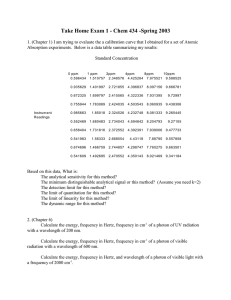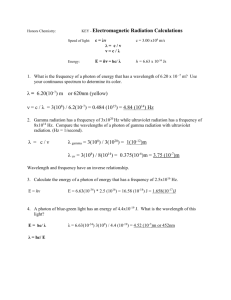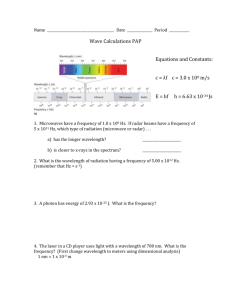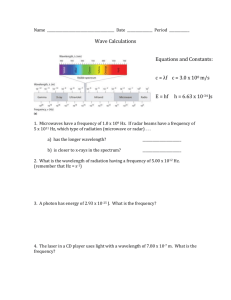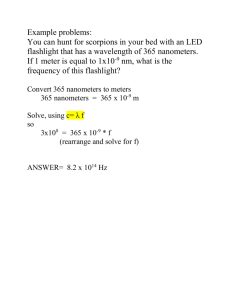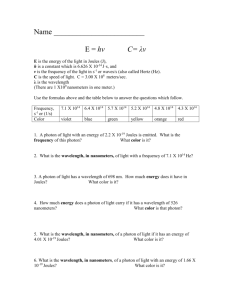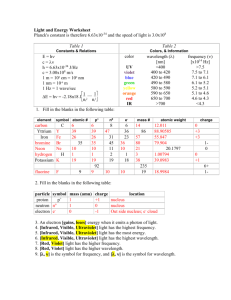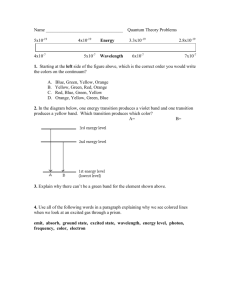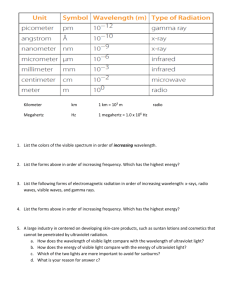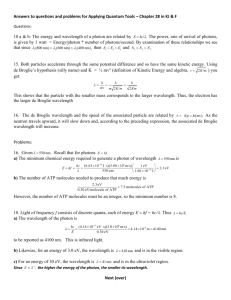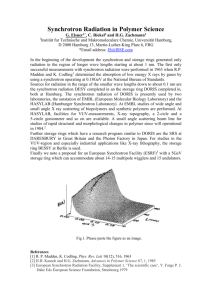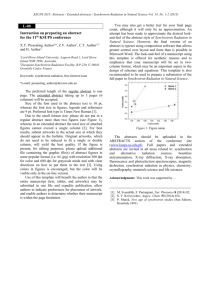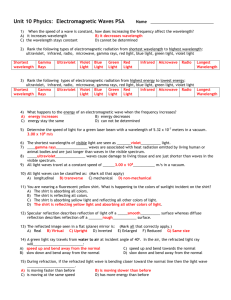(10.01)Wavelength
advertisement
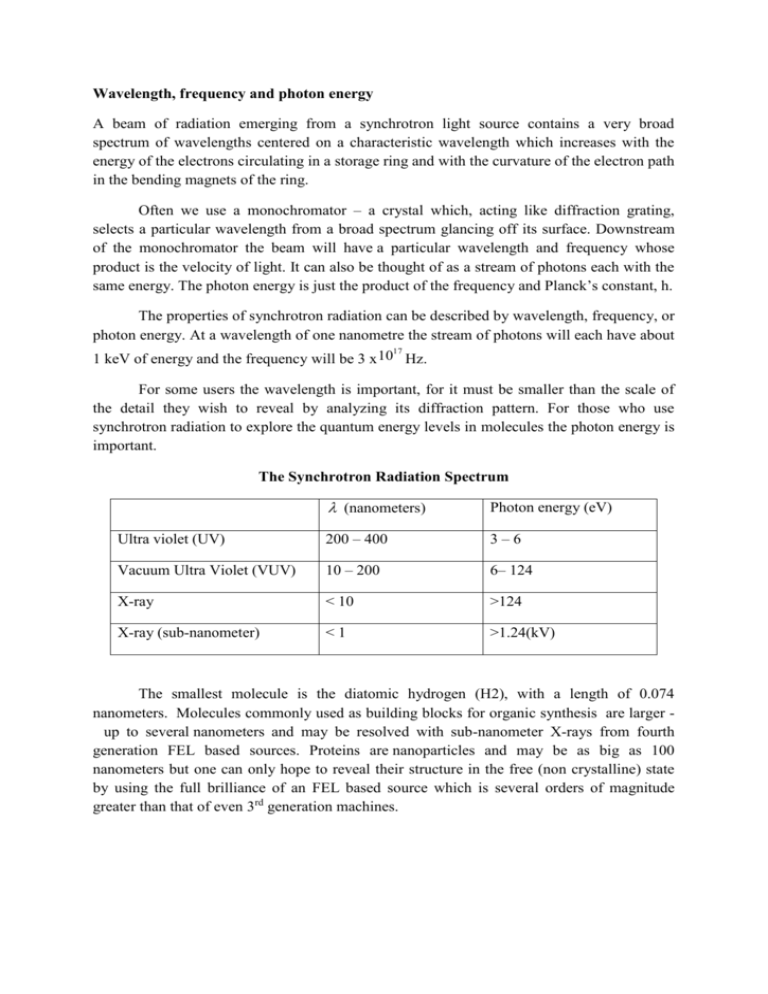
Wavelength, frequency and photon energy A beam of radiation emerging from a synchrotron light source contains a very broad spectrum of wavelengths centered on a characteristic wavelength which increases with the energy of the electrons circulating in a storage ring and with the curvature of the electron path in the bending magnets of the ring. Often we use a monochromator – a crystal which, acting like diffraction grating, selects a particular wavelength from a broad spectrum glancing off its surface. Downstream of the monochromator the beam will have a particular wavelength and frequency whose product is the velocity of light. It can also be thought of as a stream of photons each with the same energy. The photon energy is just the product of the frequency and Planck’s constant, h. The properties of synchrotron radiation can be described by wavelength, frequency, or photon energy. At a wavelength of one nanometre the stream of photons will each have about 17 1 keV of energy and the frequency will be 3 x 10 Hz. For some users the wavelength is important, for it must be smaller than the scale of the detail they wish to reveal by analyzing its diffraction pattern. For those who use synchrotron radiation to explore the quantum energy levels in molecules the photon energy is important. The Synchrotron Radiation Spectrum (nanometers) Photon energy (eV) Ultra violet (UV) 200 – 400 3–6 Vacuum Ultra Violet (VUV) 10 – 200 6– 124 X-ray < 10 >124 X-ray (sub-nanometer) <1 >1.24(kV) The smallest molecule is the diatomic hydrogen (H2), with a length of 0.074 nanometers. Molecules commonly used as building blocks for organic synthesis are larger up to several nanometers and may be resolved with sub-nanometer X-rays from fourth generation FEL based sources. Proteins are nanoparticles and may be as big as 100 nanometers but one can only hope to reveal their structure in the free (non crystalline) state by using the full brilliance of an FEL based source which is several orders of magnitude greater than that of even 3rd generation machines.



